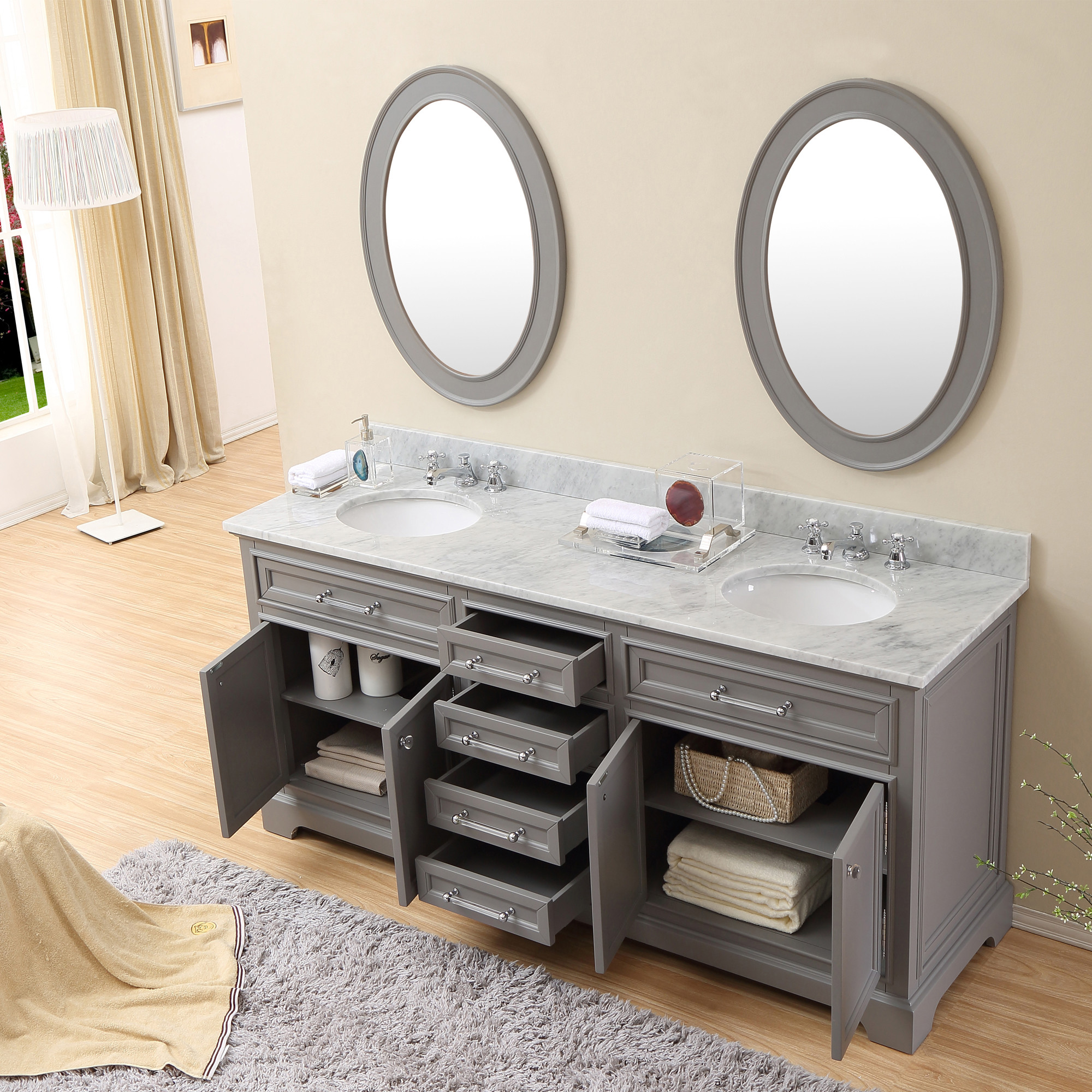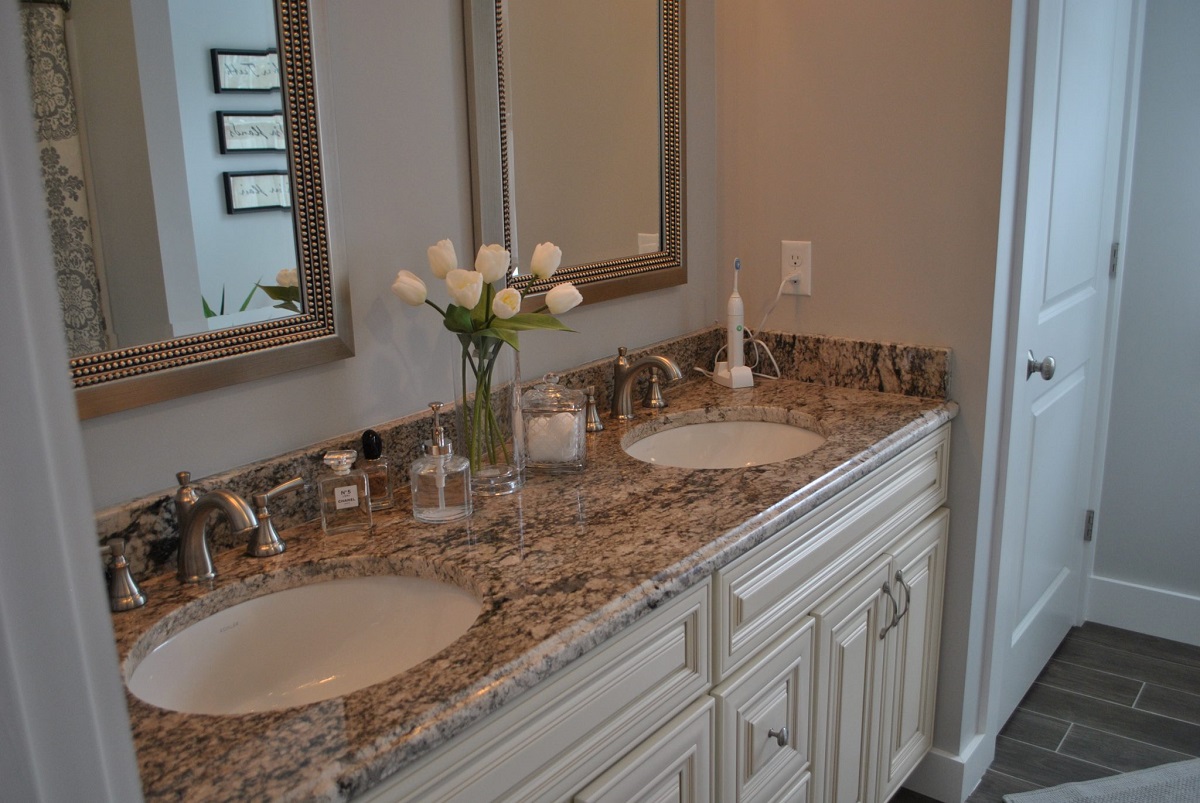Planning and Preparation: How To Level Bathroom Vanity

Before diving into the actual leveling process, careful planning and preparation are essential to ensure a successful outcome and a vanity that perfectly complements your bathroom.
Choosing the Right Bathroom Vanity
Selecting the right bathroom vanity is the first crucial step. This involves considering several factors:
- Size: The vanity should fit comfortably within the allocated space, leaving enough room for movement and access to other fixtures. Measure the available space carefully, considering the width, depth, and height of the vanity.
- Style: The vanity’s style should complement the overall design of your bathroom. Consider traditional, modern, contemporary, or farmhouse styles, among others.
- Material: Vanities are made from various materials, each offering distinct advantages. Popular options include wood, laminate, and stone. Consider durability, moisture resistance, and your budget when making this choice.
- Budget: Set a realistic budget before shopping for a vanity. Prices vary widely depending on materials, features, and brand.
Measuring the Bathroom Space
Accurate measurements are paramount to ensure the vanity fits perfectly. Use a measuring tape to determine the following:
- Width: Measure the available wall space where the vanity will be placed, taking into account any obstructions such as pipes or electrical outlets.
- Depth: Measure the distance from the wall to the center of the room. Ensure the vanity’s depth allows for comfortable movement around it.
- Height: Measure the desired height of the vanity, taking into account the height of the countertop and sink.
Designing the Layout
Once you’ve chosen the vanity, it’s time to plan its placement within the bathroom. Consider the following:
- Plumbing Fixtures: Locate the existing plumbing pipes for the sink and ensure they are accessible for connecting to the vanity.
- Lighting: Plan the placement of lighting fixtures, ensuring adequate illumination for the vanity area. Consider both ambient and task lighting.
- Other Elements: Factor in the placement of other bathroom fixtures, such as the toilet, shower, and bathtub, to ensure a balanced and functional layout.
Installation Process

Now that you’ve gathered all the necessary materials and tools, it’s time to start installing your bathroom vanity. This process may seem daunting, but with careful planning and a step-by-step approach, you can successfully install your vanity and enjoy its beauty for years to come.
Assembling the Vanity Cabinet
Before you begin, ensure that you have a clear, flat workspace. Refer to the manufacturer’s instructions for specific assembly steps, as they may vary depending on the vanity model. Generally, the assembly process involves connecting the cabinet sides, back, and bottom panels using pre-drilled holes and screws.
- Step 1: Carefully unpack the vanity cabinet components and lay them out in the workspace. Ensure all pieces are accounted for and there are no missing or damaged parts.
- Step 2: Align the side panels and connect them using screws. Ensure the panels are flush and the screws are fully tightened.
- Step 3: Attach the back panel to the sides, ensuring it is level and secured with screws.
- Step 4: Attach the bottom panel to the sides and back, ensuring it is level and secured with screws.
- Step 5: If the vanity has drawers or doors, install them according to the manufacturer’s instructions. This typically involves attaching drawer slides, installing drawer fronts, and attaching door hinges.
Finishing Touches

The final stage of installing your bathroom vanity involves adding the finishing touches that transform it from a functional fixture into a stylish and personalized centerpiece. This includes installing the sink, faucet, and hardware, as well as adding essential accessories that enhance both functionality and aesthetics.
Installing the Sink and Faucet, How to level bathroom vanity
Installing the sink and faucet is a crucial step in completing your bathroom vanity. It requires careful alignment and proper connection to ensure both functionality and aesthetic appeal.
- Prepare the sink and faucet: Before installation, ensure the sink and faucet are clean and free of debris. If your sink has pre-drilled holes, make sure they align with the faucet’s mounting points.
- Attach the sink to the vanity: Position the sink on the vanity countertop and secure it using the provided mounting hardware. Ensure the sink is level and centered before tightening the fasteners.
- Install the faucet: Follow the manufacturer’s instructions for installing the faucet. Typically, this involves attaching the faucet base to the sink, connecting the supply lines to the water source, and attaching the spout and handles.
- Test for leaks: Once the faucet is installed, turn on the water supply and check for leaks. If any leaks are detected, tighten the connections or consult the faucet’s installation guide for troubleshooting steps.
Attaching Hardware
Drawer pulls and cabinet knobs are essential for providing easy access to the storage space in your bathroom vanity. Installing these hardware elements requires careful measurement and alignment to ensure a polished and functional finish.
- Choose the right hardware: Select drawer pulls and cabinet knobs that complement the style of your bathroom vanity and the overall design of your bathroom. Consider factors like size, material, and finish.
- Measure and mark: Carefully measure the placement of each piece of hardware on the drawers and cabinet doors. Mark the location with a pencil or a marker to ensure accurate placement during installation.
- Install the hardware: Use a screwdriver or drill to install the hardware according to the manufacturer’s instructions. Ensure the screws are tightened securely but not overtightened to avoid damaging the wood.
- Check for alignment: After installing all the hardware, double-check that each piece is aligned correctly and securely attached. Make any necessary adjustments before moving on to the next step.
Essential Accessories
Beyond the vanity itself, there are a variety of accessories that can enhance both the functionality and aesthetics of your bathroom.
- Mirrors: A mirror is a must-have for any bathroom, providing a place to check your reflection and enhancing the overall visual appeal of the space. Choose a mirror that complements the style of your vanity and bathroom.
- Lighting fixtures: Proper lighting is essential for a functional and inviting bathroom. Consider installing vanity lights above the mirror to provide ample illumination for grooming tasks.
- Storage solutions: Bathroom vanities often provide limited storage space. To maximize organization, consider adding accessories like towel bars, toothbrush holders, and soap dishes.
How to level bathroom vanity – Leveling a bathroom vanity is super important, especially if you want to avoid that annoying wobble. But, even if you get that vanity perfectly level, you might still need a little extra support if you have trouble getting in and out of the tub.
That’s where a drive medical bathroom safety shower tub bench chair comes in handy. It can make all the difference in making your bathroom safer and more accessible. And once you’ve got your vanity and your bench sorted, you’ll be all set for a super comfy and stylish bathroom.
Leveling a bathroom vanity is crucial for a clean, functional space. It’s all about making sure that sink sits perfectly and doesn’t wobble. You can even add a touch of personality with a stylish blue bathroom trash can next to it.
But remember, once the vanity is level, it’s best to keep it that way, so you don’t have to repeat the process!